|
Welcome to the history section of the Guaecá Beach Wave Forecast (GUAECAST) project! This project was initiated to provide highly accurate surf condition forecasts for Guaecá Beach, situated on the rugged Southeast Brazilian coast. Traditional global scale numerical wave models with insufficient resolution often fail to accurately represent the coastal configuration, leading to inaccurate swell predictions in the area. To address this challenge, we developed a forecast system using shallow water waves numerical model with high resolution grid. Our current version -- GUAECAST V3.0 -- is called Wave Forecast for Baixada Santista, São Sebastião, and Ubatuba/SP - Brazil. This version incorporates several updates and improvements over the previous versions. In this page, we will take a closer look at the history of the project, including its various versions, and provide an overview of how the model is running today. You will also find visual representations of the current model configuration at the end of the page. GUAECAST V1.0 features: This initial version of the project was focused on Guaecá Beach in São Sebastião, São Paulo, and utilized the Simulating Waves Nearshore (SWAN) model in a non-stationary mode. The model used a variable resolution curvilinear numerical grid that covered the municipalities of São Sebastião and Ilhabela, with a higher resolution (approximately 1000 m) at Guaecá Beach. To provide accurate forecasts, the SWAN model was nested by data from the global wave model WaveWatch 3 (WW3) from the Environmental Modelling Center (EMC) of the National Oceanic and Atmospheric Administration (NOAA). This model provided spatial and temporal resolutions of 0.5 degrees and 3 h, respectively, for a forcast of 7 days. Wind data from the same global model and variations in sea level from harmonic predictions derived from the port of São Sebastião tidal data were also incorporated. GUAECAST V1.0 was only run operationally during the autumn and winter surfing wave seasons in 2017 and 2018. However, intermediate versions (V1.x) were developed to improve the model's accuracy. These updates included the implementation of a quasi non-stationary mode, adjustments of the model variables and updates to the bathymetry of the region. Overall, the initial version of the GUAECAST project laid the foundation for future versions and demonstrated the potential of numerical models with high grid resolution in accurately predicting surfing conditions at Guaecá Beach. GUAECAST V2.0 features: GUAECAST V2.0 marked a crucial project enhancement, broadening its coverage to operate year-round. Additionally, a dedicated website was launched for efficient forecast distribution. The model covered the municipalities of Santos, Guarujá, São Sebastião, and Ubatuba in detail, with lower resolution coverage of the coasts of the state of São Paulo and the southern coast of the state of Rio de Janeiro (Brazilian southwest coast - Brazil, Figure 1). While the project was no longer exclusively focused on Guaecá Beach, the name remained the same. The expansion was achieved by implementing five regularly spaced numerical grids, with the broadest grid covering the state of São Paulo and the south of the state of Rio de Janeiro (Figure 1), fed by the global wave model WW3 from NOAA/EMC, as in GUAECAST V1.0. This broadest grid feeds the intermediate grid covering the São Paulo coast, with the southern limit being Peruíbe and the northern limit being the Ubatuba/SP - Paraty/RJ region (Figure 2). The intermediate grid feeds the other three local grids for Santos/Guarujá, São Sebastião, and Ubatuba municipalities, all with a resolution of approximately 400 meters -- Figure 3. Wind data from the Global Forecast System (GFS) from NOAA is used in all numerical grids. In the local grids, the variation in sea level includes astronomical and meteorological data, derived from another personal project under development. Additionally, the high-resolution grid for the municipalities of Santos, Guarujá, São Sebastião, and Ubatuba provides local wave forecasts for various surf spots along the coast - Figures 4, 5, and 6. GUAECAST V2.0 was updated with intermediate versions (V2.x), including updates to the bathymetry of the region and adaptations on the broader grid due to the update of the global wave model WW3 from NOOA/EMC, which was unified with the GFS and started having a spatial resolution of 2.5 degrees. GUAECAST V3.0 features: The main difference in this version, compared to the previous one, is the extension of the forecasted period from 7 to 14 days, aligning with updates in the global wave model WW3 from NOAA/EMC. This new version includes updated visual data on the website, featuring new maps and charts. The bathymetry of the region was also refreshed with the latest available data. Below, you'll find the current numerical grid configuration of the GUAECAST project. The last image (Figure 7) illustrates the scale difference between the global wave model (Wave Watch 3 - NOAA/EMC) and the high-resolution grid used by GUAECAST for the Guaecá Beach region. 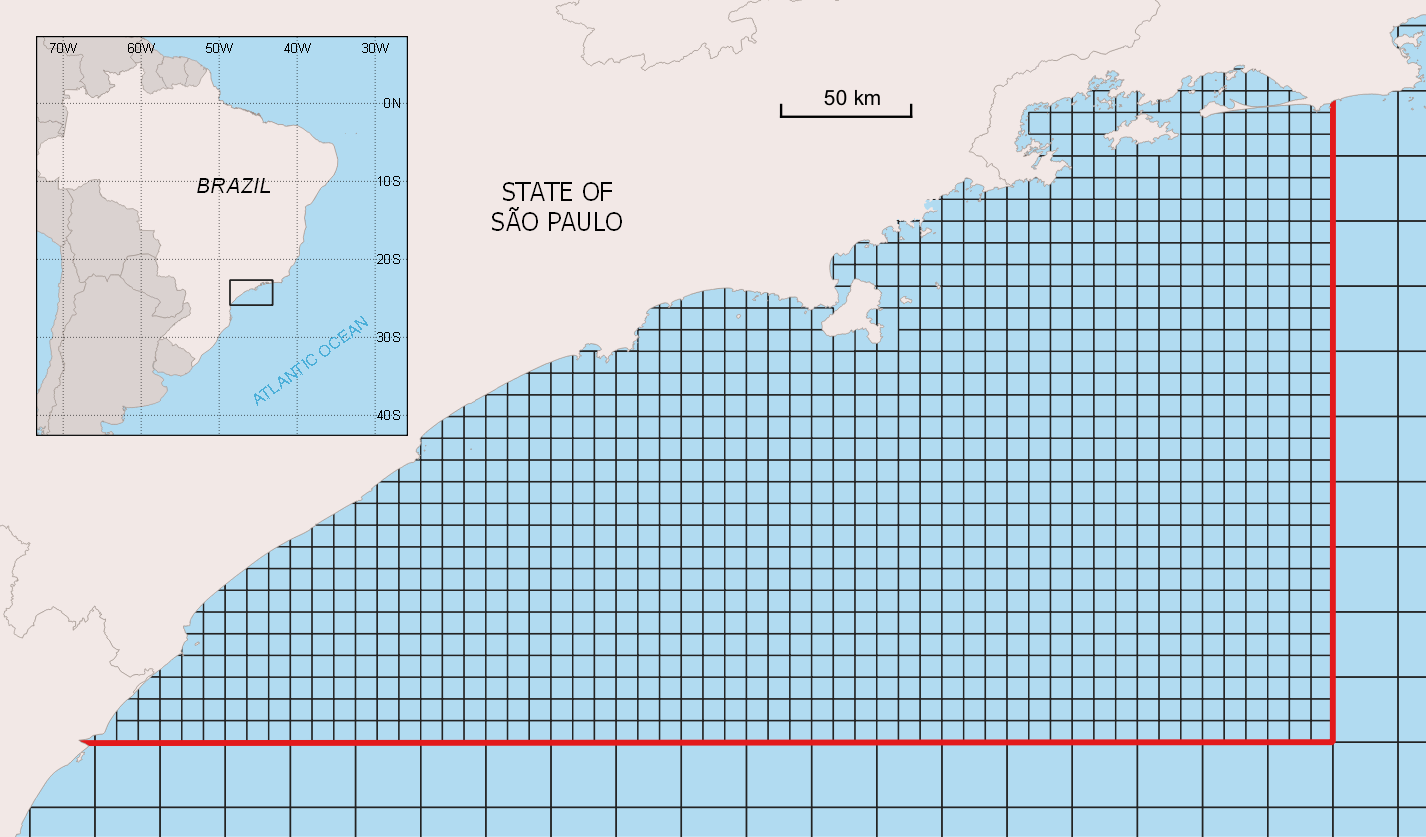 Figure 1: Broadest grid of GUAECAST, covering the south of the state of Rio de Janeiro and the state of São Paulo, with open boundaries indicated in red. The coarser grid is the global wave model WaveWatch 3 from NOAA/EMC.  Figure 2: Intermediate grid of GUAECAST, covering the center and north of the state of São Paulo, with open boundaries indicated in red. The coarser grid is the GUAECAST broadest grid (SP/RJ (south) - Figure 1). 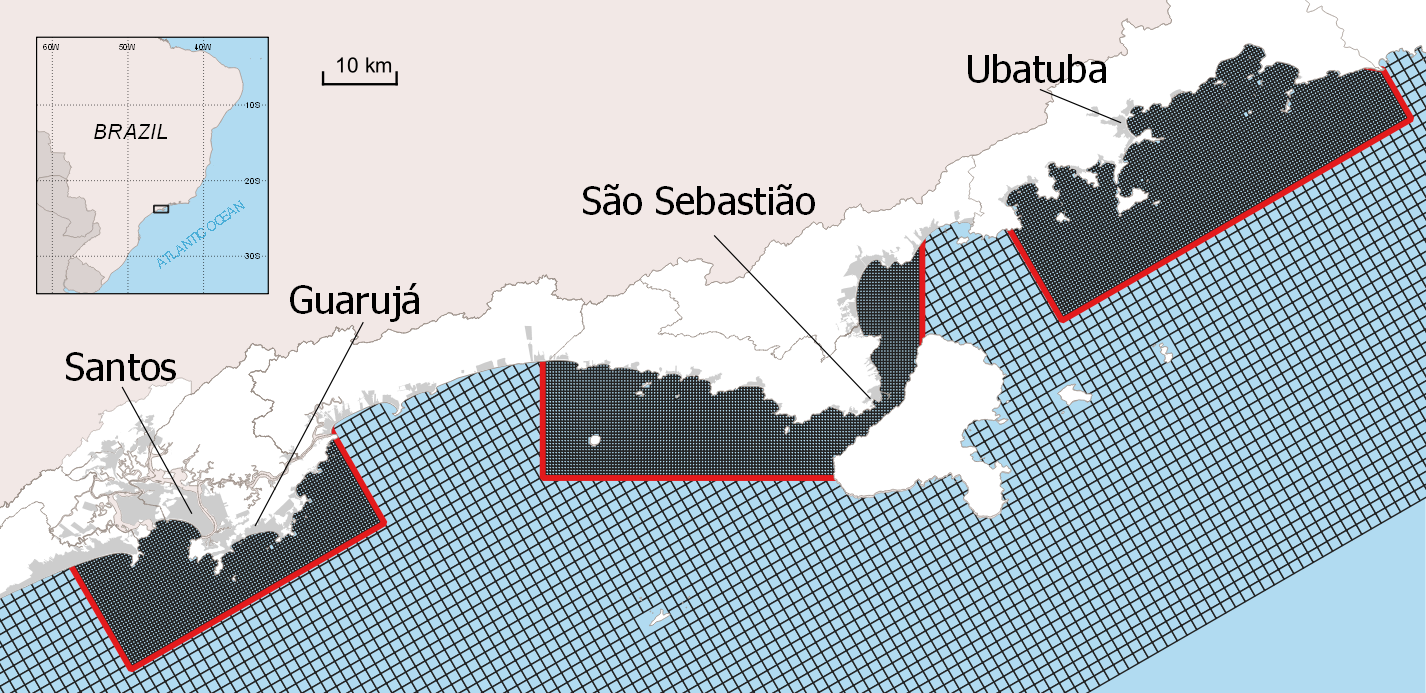 Figure 3: Local grids of GUAECAST, covering Santos/Guarujá, São Sebastião, and Ubatuba, with open boundaries indicated in red. The coarser grid is the GUAECAST intermediate grid (center/north SP - Figure 2). 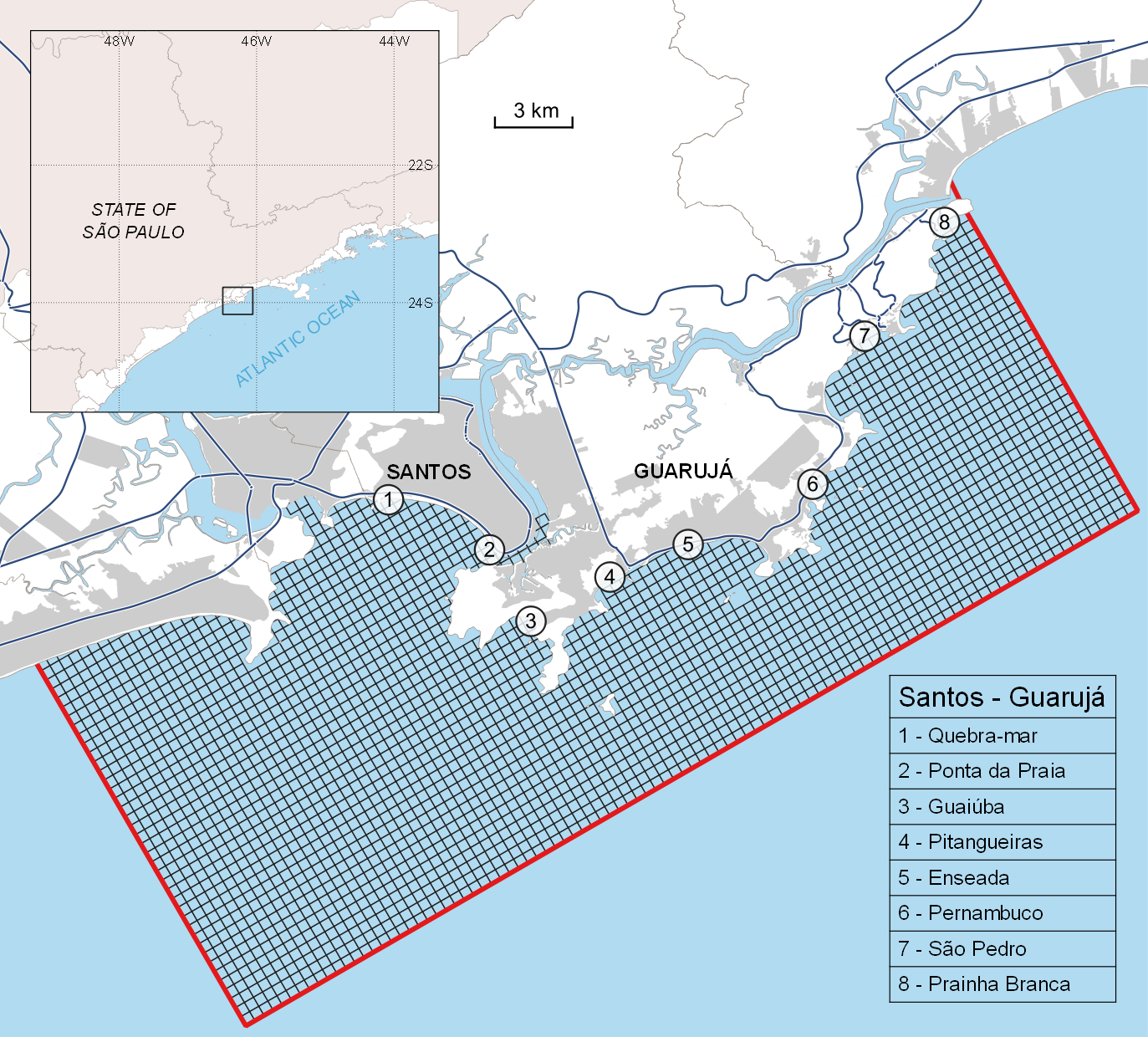 Figure 4: Detailed view of the GUAECAST local grid for Santos/Guarujá, with open boundaries indicated in red. The numbers on the map indicate the beaches where local analysis is presented. 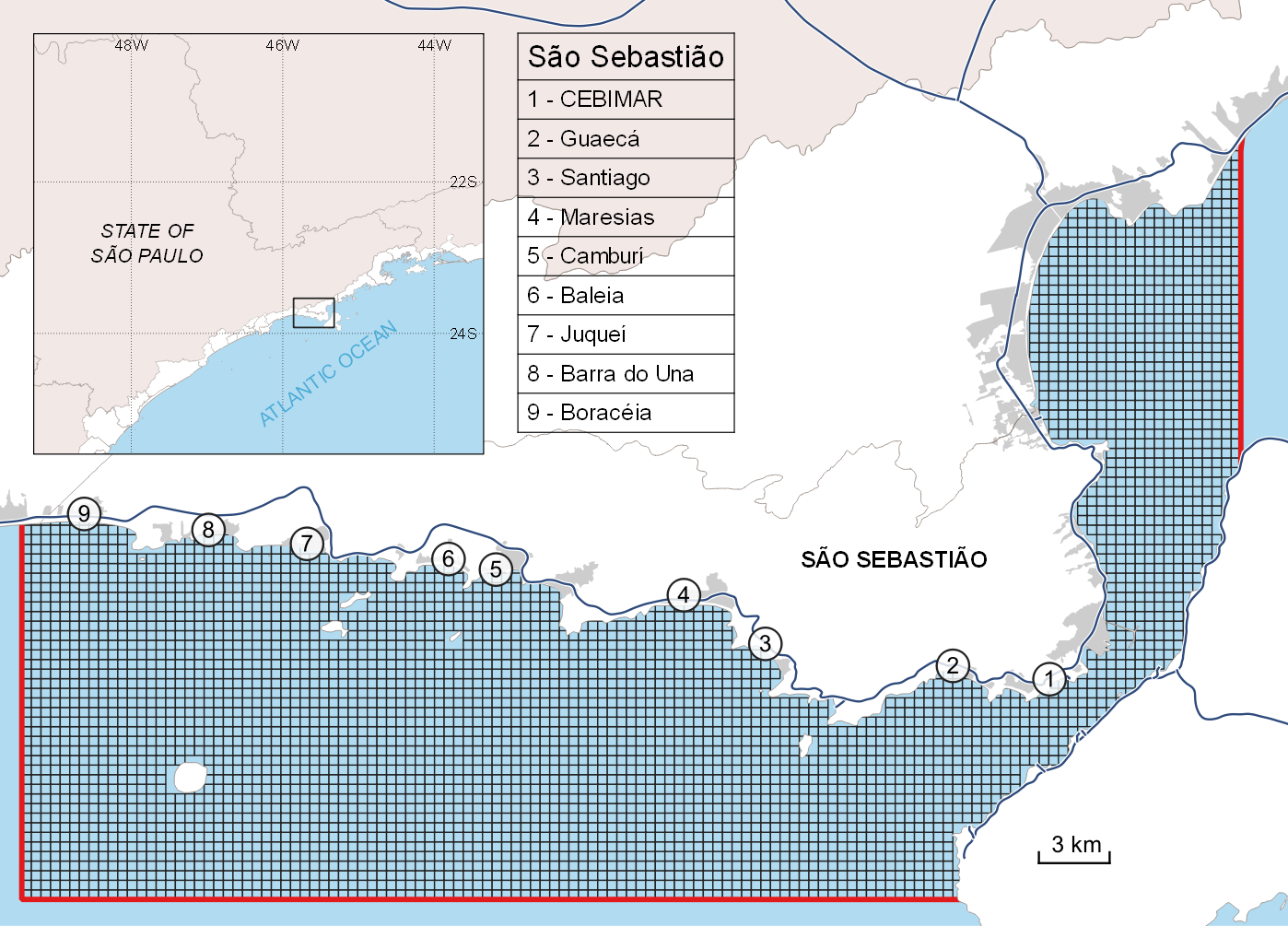 Figure 5: Detailed view of the GUAECAST local grid for São Sebastião, with open boundaries indicated in red. The numbers on the map indicate the beaches where local analysis is presented. 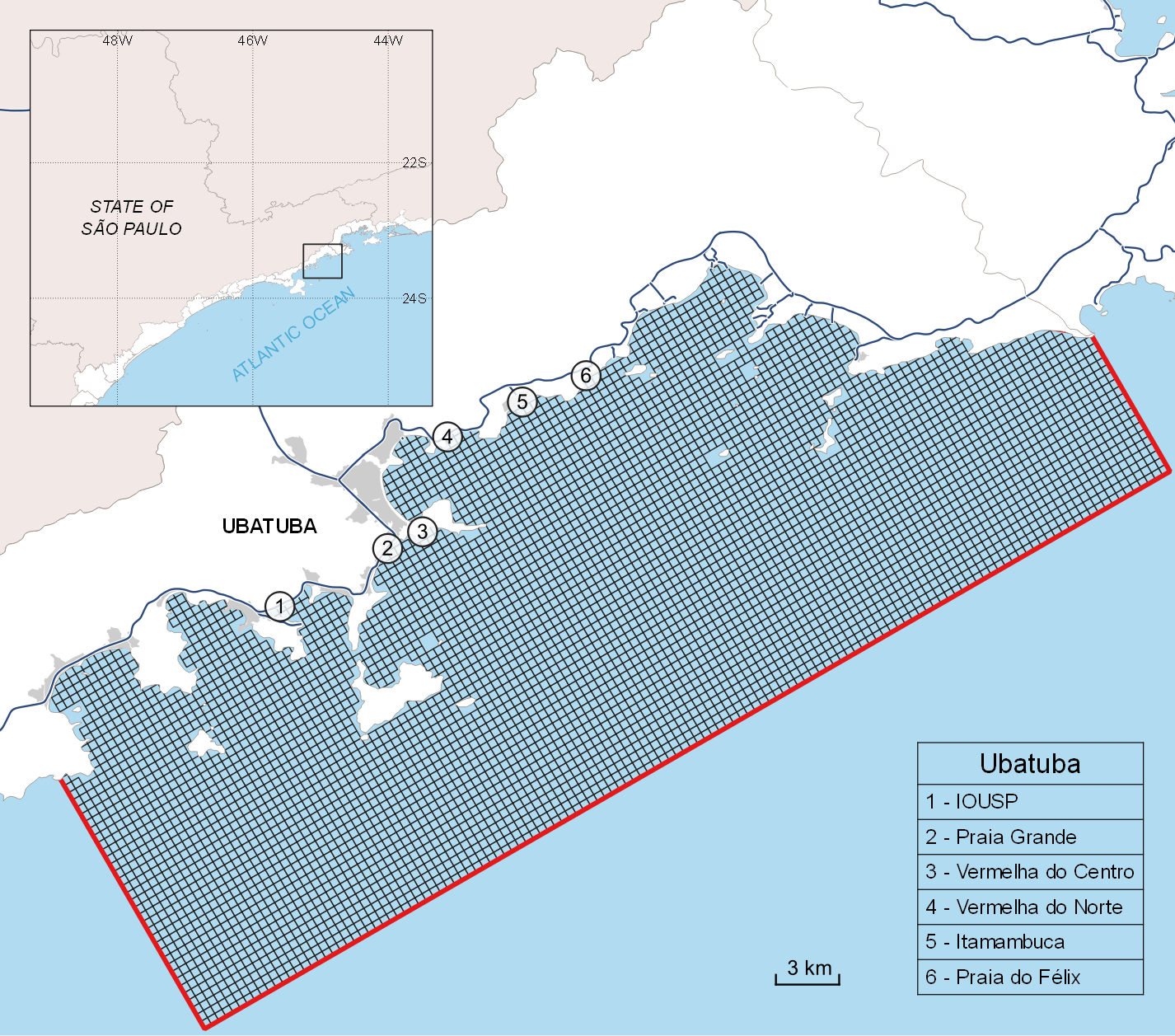 Figure 6: Detailed view of the GUAECAST local grid for Ubatuba, with open boundaries indicated in red. The numbers on the map indicate the beaches where local analysis is presented. 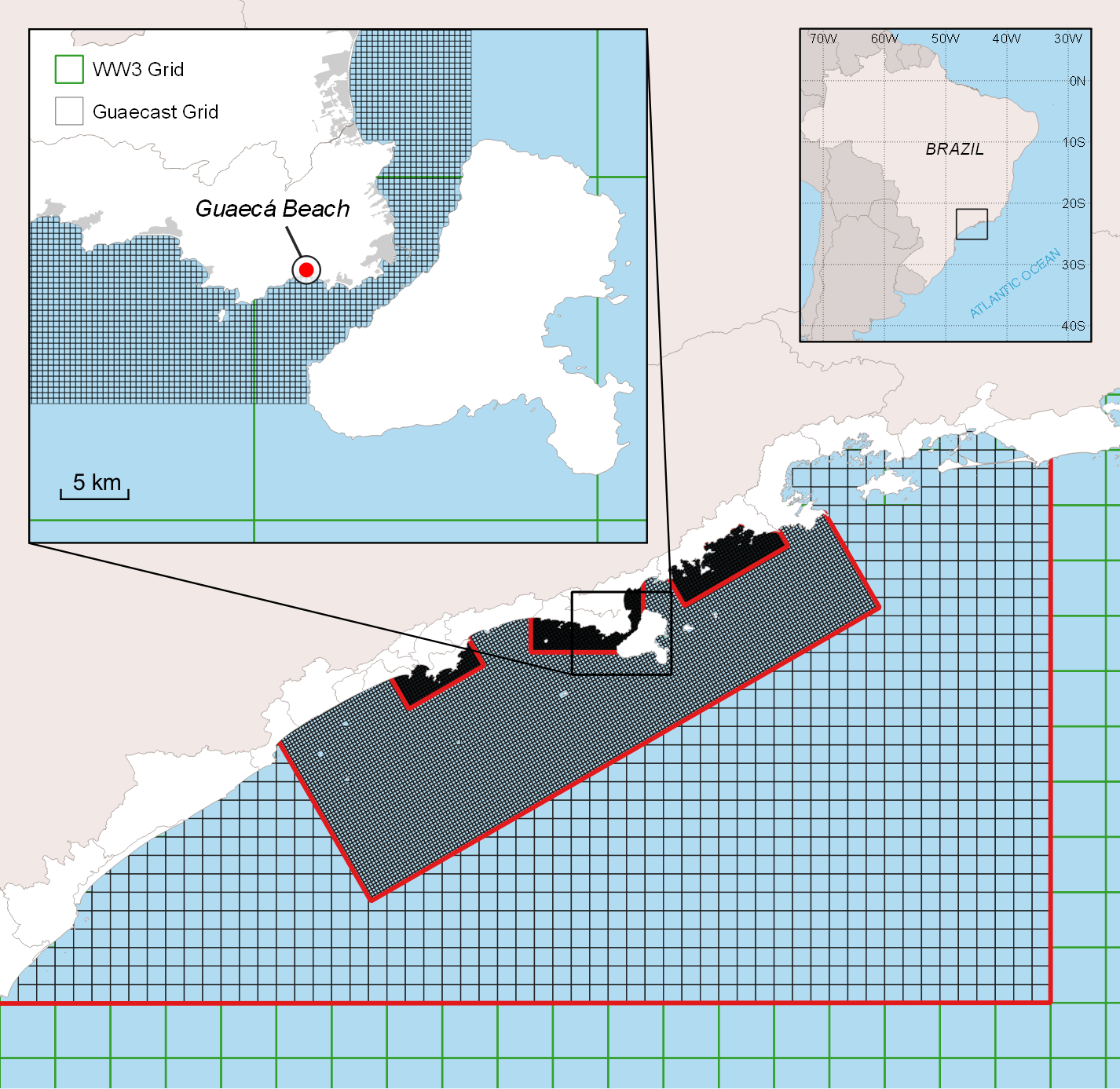 Figure 7: The GUAECAST grids (indicated in black with open boundaries in red) and the WW3 grid (indicated as a coarser green grid). The top left panel shows a zoom on the Guaecá beach region and displays the spatial difference between the global wave model WW3 and the GUAECAST local grid. |